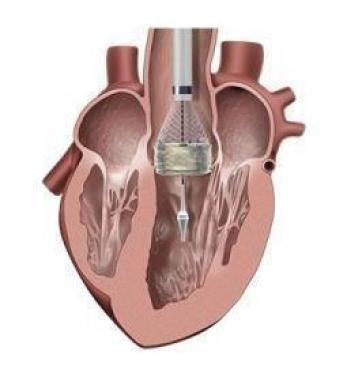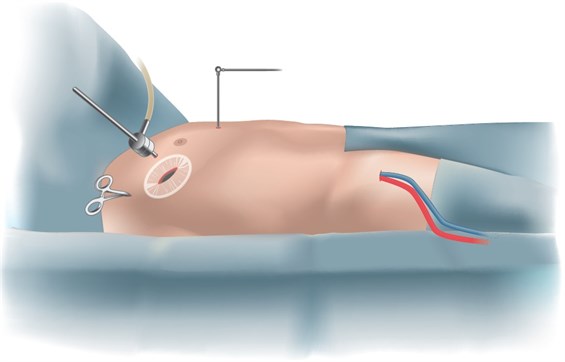

Aortic stenosis; It is the narrowing or deterioration of the valve between the left ventricle of the heart, which pumps blood to the body, and the aortic main artery. When aortic stenosis progresses, the left ventricle of the heart is exposed to high pressure and there is a decrease in the amount of blood pumped to the whole body. As a result of aortic stenosis, exposure of the left heart to high pressure and the decrease in blood pumped to the body do not disturb the patient to a certain extent. However, with a significant reduction in the aortic valve; Shortness of breath with exertion, chest pain accompanied by shortness of breath, and, in later cases, fainting complaints occur. In the later stages of aortic stenosis, the patient also has a risk of sudden death. In this regard, in cases of aortic stenosis, patients with surgical problems.
Being able to be treated with TAVI method is an important development. TAVI is an application in which people with aortic valve disease who are unsuitable for surgery due to various reasons are treated with interventional methods.
TAVI is the process of widening the narrowed valve area that reaches the heart through the groin in the angio laboratory, without opening the chest and without stopping the heart. TAVI, which is a method that is generally applied in patients over 80 years of age and in whom open surgery cannot be performed, is performed in cases of aortic stenosis.

In Which Situations Is Non-Surgical Heart Valve Replacement Applied?
The aortic valve, where aortic stenosis occurs, is the valve located at the mouth of the main vessel that comes directly from the heart. With the advancing age, calcification can be seen in the aortic valve and the valve cannot perform its functions in a healthy way and has difficulty in opening and closing. Which patients should be preferred;
advanced age,
People with chronic health problems as well as heart disease,
Persons and situations where general anesthesia is inconvenient
In people whose general health condition is not suitable for surgery
Aortic valve stenosis, which occurs due to advanced age, can turn into a process in which recovery and return to normal life are extremely difficult for patients after open heart surgery, where the recovery process has certain difficulties for each patient. In advanced-aged aortic valve patients, the possibility of lung infection after open heart surgery increases and the chances of recovery are very low. Since the chance of open surgery is lower in older patients than in younger patients, valve repair or replacement is performed in these patients through interventional methods.
What are the Diagnostic Methods for Non-Surgical Heart Valve Replacement?
Aortic valve opening is 3-4 cm2 in a normal and healthy body functioning. In the case of aortic stenosis, the patient's complaints become evident as the valve opening falls below 1 cm2, and valve intervention becomes mandatory.
The diagnosis of aortic stenosis, which presents with significant complaints, is made by examination and echocardiography methods if the aortic valve opening falls below a certain rate and cannot perform its basic functions properly.

TAVI Treatment Method in Non-Surgical Heart Valve Replacement
If the stenosis in the aortic valve reaches a certain level, intervention on the valve becomes a necessity and serious life risks may arise. In elderly patients and patients with advanced valve stenosis, necessary interventions to the aortic valve can be performed with non-surgical interventional methods.
TAVI; It is an interventional treatment method applied in patients with aortic valve stenosis, who cannot undergo open heart surgery, or where surgery is at high risk.
TAVI method is the process of replacing the aortic valve by entering the inguinal vein without opening the patient's chest. The TAVI method is a non-surgical treatment option that can be applied to patients with calcification and deterioration of the aortic valve due to advanced age, eliminating the risks of surgery.